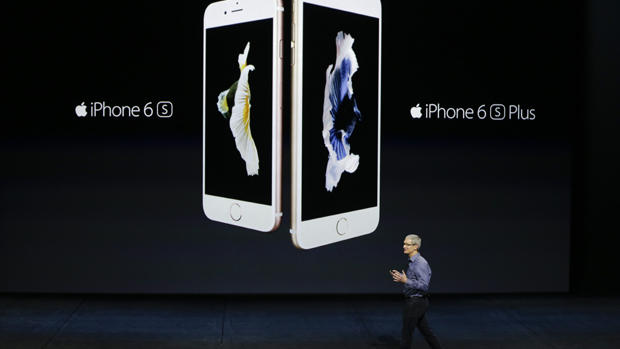New iPhone camera packs 12 megapixels -- so what?
Yesterday's Apple (AAPL) event unfurled a list of "monster announcements," with the expected new iPhone models coming at the end of the extravaganza.
In addition to the pressure-sensitive touch interface and faster chip came news of a 12 megapixel camera.
That may not pack the punch of the 120 megapixel digital SLR that Canon has promised, but for a phone it's amazingly impressive, right? Well, maybe. But if you're like virtually every other consumer, you won't see a discernible difference.
Megapixel count has been a marketing tool for digital camera makers since the day the first ones were launched. The allure is easy to see because bigger is always better. Except, it isn't. Cameras are complicated, and what you do with one sets the stage for what you need. And what you need is a lot less than what you get -- and pay for. Here's why.
You can't use the megapixels: Megapixel count is important when considering how much detail you can record. The more megapixels, the more information is available to the camera. But that higher pixel counts matters only if you need to make a really big print or if you have to blow up the image to use only a small portion of it.
Head into a Walgreens to get your digital image printed, and you'll find out that the minimum quality needed is 648,000 pixels for an 8 x 10 print, or far below even 1 megapixel. If you're looking at images on a screen, particularly a small one like on a phone or tablet, the size matters even less.
The sensor is too small: Phones and even a lot of stand-alone cameras use small sensor chips to capture an image because the chips have to fit into small devices that might fit in a pocket. However, the smaller the chip, the more problematic it can be to squeeze more pixels onto it because there's less room for light to strike each pixel. In addition, electrical interference on the chip can add what become visual irregularities.
Vendors do a lot to minimize or eliminate any problems, but that means struggling to make the higher counts work when they're not needed in the first place.
Software rules: One of the tricks of the trade is to realize that even with high megapixel counts, much of an image still isn't captured directly. So, software fills in between the pixels, estimating values based on complex algorithms. All the major vendors do this relatively well. A few megapixels difference and the software will fill in the blanks, so you can't tell the difference.

Your photo is no better than the lens: Any image depends on the quality of the lens. Take two identical cameras, and outfit one with a bad quality lens and the other with a top performer. The latter will give the better picture without a question. If you want a better image, find a way to get a better lens.
Technique trumps gadgets: The final factor is how well you can use a camera. Ever take a picture while holding a cell phone at arm's length? Display the results on a big screen, and you'll probably notice that everything looks blurry. That's because it's easy for arms and hands to shake slightly, messing up the image. The less light there is on the scene, the bigger the problem because the shutter stays open longer to let more light in. Slower shutter speeds translate into more chance for wobble. Steadying a camera can be a simple but useful art.
Similarly, the more you know about how to expose shots, the better your chance of getting a better picture. If your subject has a lot of light behind it (called backlight), it will look dark. Taking pictures early or late in the day gets flatteringly warm light. Knowing how to use the image controls on the camera lets you make decisions to improve what you ultimately get.
In short, if you want a better picture, don't run off for the next camera offering a big jump in available megapixels. Nor is it wise based solely on megapixel counts to buy high-end offerings from Apple rivals Samsung, LG or Sony (SNE), the first two of which offer 16 megapixel cameras with Sony touting 23 megapixels. Instead, learn how to use your camera and know when someone is trying to sell you a Formula 1 race car you won't be able to drive on your local streets anyway.
- In:
- iPhone
Erik Sherman is a widely published writer and editor who also does select ghosting and corporate work. The views expressed in this column belong to Sherman and do not represent the views of CBS Interactive. Follow him on Twitter at @ErikSherman or on Facebook.
Twitter FacebookDisclaimer: The copyright of this article belongs to the original author. Reposting this article is solely for the purpose of information dissemination and does not constitute any investment advice. If there is any infringement, please contact us immediately. We will make corrections or deletions as necessary. Thank you.







